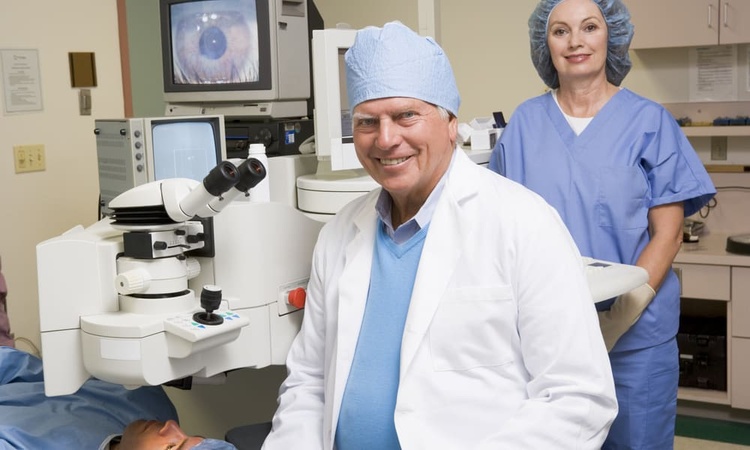Lasik Eye Surgery in USA - The Complete Guide to Clear Vision
Lasik eye surgery has transformed millions of lives across the United States, offering a proven path to visual freedom from glasses and contact lenses. This refractive surgery uses advanced laser technology to reshape the cornea, correcting common vision problems like nearsightedness, farsightedness, and astigmatism. With over 700,000 procedures performed annually in the US, Lasik has established itself as a safe and effective solution for achieving clearer vision.

Clear Vision Starts Today: Understanding Lasik Technology
Modern Lasik procedures utilize sophisticated femtosecond lasers and excimer lasers to create precise corneal modifications. The surgery typically takes 10-15 minutes per eye, with most patients experiencing immediate vision improvement. FDA-approved Lasik technology has evolved significantly since its introduction in the 1990s, now offering bladeless procedures and wavefront-guided treatments that customize the correction to each individual’s unique eye characteristics.
The procedure begins with creating a thin corneal flap, followed by laser reshaping of the underlying tissue, and concluding with flap repositioning. Advanced eye tracking systems ensure accuracy throughout the process, while topical anesthetics minimize discomfort. Most patients return to normal activities within 24-48 hours, though complete healing may take several weeks.
No More Glasses, No More Limits: Candidacy and Benefits
Ideal Lasik candidates are generally over 18 years old with stable vision prescriptions for at least one year. The procedure works effectively for prescriptions ranging from -1.00 to -12.00 diopters for nearsightedness, +1.00 to +6.00 diopters for farsightedness, and up to 6.00 diopters of astigmatism correction. Comprehensive pre-surgical evaluations assess corneal thickness, pupil size, and overall eye health to determine suitability.
Benefits extend beyond convenience, encompassing improved quality of life, enhanced sports performance, and career advantages in fields where glasses or contacts may be problematic. Success rates exceed 96%, with most patients achieving 20/40 vision or better, and approximately 90% reaching 20/20 vision or better. Long-term satisfaction rates remain consistently high, with studies showing sustained results decades after surgery.
Your Eyes - Your Future: Recovery and Long-term Outcomes
Post-operative care involves using prescribed eye drops, avoiding eye rubbing, and protecting eyes from bright light during initial healing. Most patients experience mild discomfort, dryness, or light sensitivity for the first few days. Vision typically stabilizes within one to three months, though some patients notice continued improvement for up to six months.
Long-term studies demonstrate excellent stability of Lasik results. While age-related presbyopia may still develop after 40, requiring reading glasses, the distance vision correction typically remains permanent. Enhancement procedures are available if needed, though required in less than 5% of cases. Regular eye examinations remain important for monitoring overall eye health and detecting age-related conditions unrelated to Lasik surgery.
The Smart Choice for Clear Sight: Choosing the Right Provider
Selecting an experienced surgeon and accredited facility significantly impacts outcomes. Board-certified ophthalmologists with extensive Lasik experience typically achieve superior results. Research providers’ credentials, technology platforms, and patient satisfaction rates. Many surgeons offer free consultations where they evaluate candidacy and discuss realistic expectations.
Technology varies among providers, with newer platforms offering enhanced precision and reduced side effects. Custom wavefront treatments, topography-guided procedures, and SMILE (Small Incision Lenticule Extraction) represent advanced options available at leading centers. Geographic location within the USA may affect technology availability and pricing, with major metropolitan areas typically offering the most advanced options.
| Provider Type | Average Cost Range | Technology Level |
|---|---|---|
| National Chains | $1,500 - $3,000 per eye | Standard to Advanced |
| Academic Medical Centers | $2,000 - $4,000 per eye | Advanced Research-Grade |
| Private Ophthalmology Practices | $1,800 - $3,500 per eye | Variable by Practice |
| Premium Laser Centers | $2,500 - $5,000 per eye | Latest Technology |
Prices, rates, or cost estimates mentioned in this article are based on the latest available information but may change over time. Independent research is advised before making financial decisions.
Discover the Power of Lasik: Making an Informed Decision
Financial considerations include understanding what’s included in quoted prices, such as pre-operative evaluations, surgery, post-operative care, and potential enhancements. Many providers offer financing options, and some insurance plans provide partial coverage or discounts. HSA and FSA accounts can often be used for Lasik expenses, providing tax advantages.
Realistic expectations are crucial for satisfaction. While most patients achieve excellent results, perfect vision isn’t guaranteed for everyone. Discussing potential risks, including dry eyes, glare, halos, or under-correction, helps ensure informed decision-making. Comparing multiple consultations allows for thorough evaluation of options and building confidence in the chosen provider and approach.
Understanding the commitment involved, including follow-up appointments and lifestyle modifications during healing, prepares patients for successful outcomes. The investment in vision correction often pays dividends in improved quality of life, reduced long-term costs of glasses and contacts, and enhanced daily experiences for decades to come.
This article is for informational purposes only and should not be considered medical advice. Please consult a qualified healthcare professional for personalized guidance and treatment.




